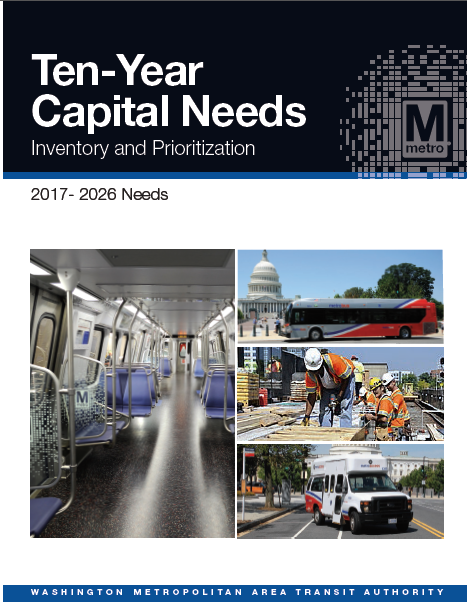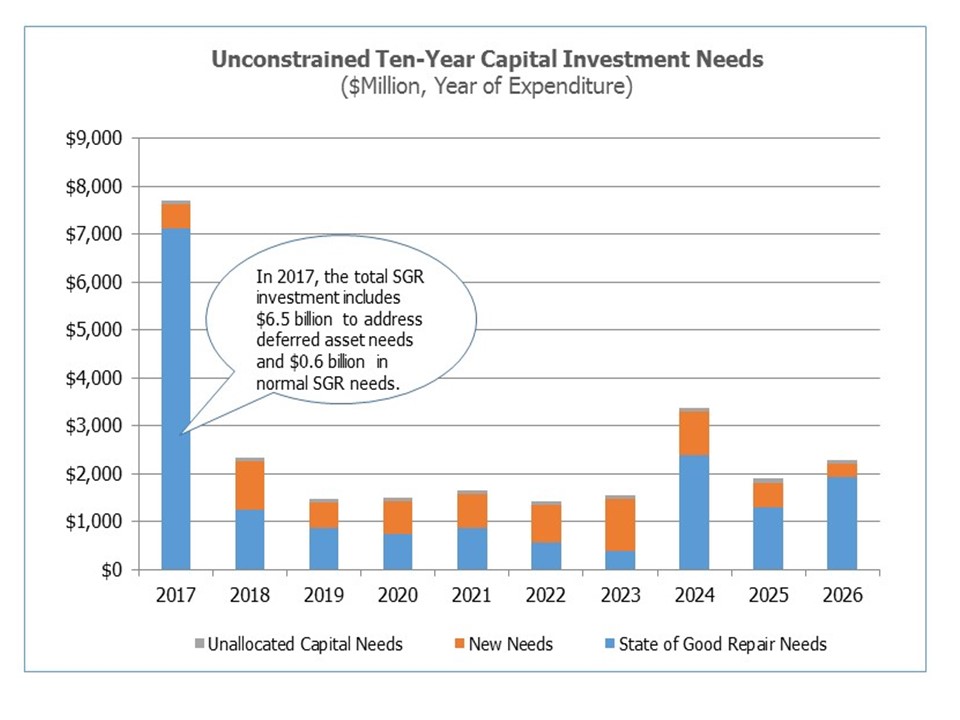Metro’s Ten-Year Capital Needs Inventory and Prioritization is Complete
Metro needs to invest $17B over 10 years to achieve and maintain a State of Good Repair.
In June 2016, we introduced the initiation of the 2016 Capital Needs Inventory (CNI), with the goal to develop a list of fiscally unconstrained and prioritized investment needs over the next ten years and to meet the new federal Transit Asset Management (TAM) requirements. After seven months of rigorous work, the first phase of the CNI is coming to a completion!
What distinguishes this CNI from Metro’s efforts in previous decades? Breakthroughs on several fronts:
- It represents the first time that Metro developed a ground-up, data-driven and FTA-compliant method for asset prioritization.
- It consolidates asset data sources and builds a complete asset inventory database that catalogue higher-level assets and asset features.
- It estimates asset condition (and need rehab/replacement date) based on measurable data such as age of asset and history of rehabilitation, and projects replacement and rehabilitation needs to advance a State of Good Repair (SGR).
- It establishes a prioritization methodology aligned with Metro’s strategic goals and priorities and uses FTA’s TERM (Transit Economic Requirements Model) to prioritize all asset needs.
Here is a sneak peek of the CNI:
The region has made smart investments in building the Metro system over the past four decades. It would take the region $40 billion in today’s dollars just to rebuild the same Metro capital assets, excluding rights-of-way.
Metro needs approximately $25 billion in capital investment over the next 10 years to achieve a State of Good Repair (SGR), meet regulatory compliance, modernize technology, and address longstanding and emerging safety needs.
Metro needs to invest about $17 billion on the system we have to return it to a State of Good Repair (SGR) and sustain the SGR over the next ten years.
Included in this estimate is approximately $7B in rehabilitation or replacement for assets that as of 2016 have already exceeded their useful life. These deferred asset needs are spread across all major asset categories and operating modes, including Metrorail, Metrobus, MetroAccess, and business support.
The SGR assets that need to be in compliance with National Transportation Safety Board (NTSB), FTA, and other safety and security directives are among the highest-priority investments. These compliance based SGR investments total $1.8B, as shown below:
- 1000 series railcars
- Track circuits
- Intrusion detection system
- Power cable
- Train control cable
- Water intrusion project
- Subway lighting
- Tunnel ventilation
- Radio system upgrades
Additionally, Metro needs to spend $7 billion in new investments to address safety, compliance, obsolescence or near-term system enhancements. Examples of these compliance-related investments include:
- NTSB and FTA directives
- Fire Life Safety requirements
- Local and state environmental regulations
- System safety improvements
- Security improvements and crime reduction
Finally, Metro needs to budget approximately $800 million over the ten years to cover a variety of capital activities, such as regular repairs and maintenance and engineering services.
The CNI report (PDF) is online for your reading pleasure, and this will be the first in a series of posts highlight the report’s detailed findings. Stay tuned.




Recent Comments